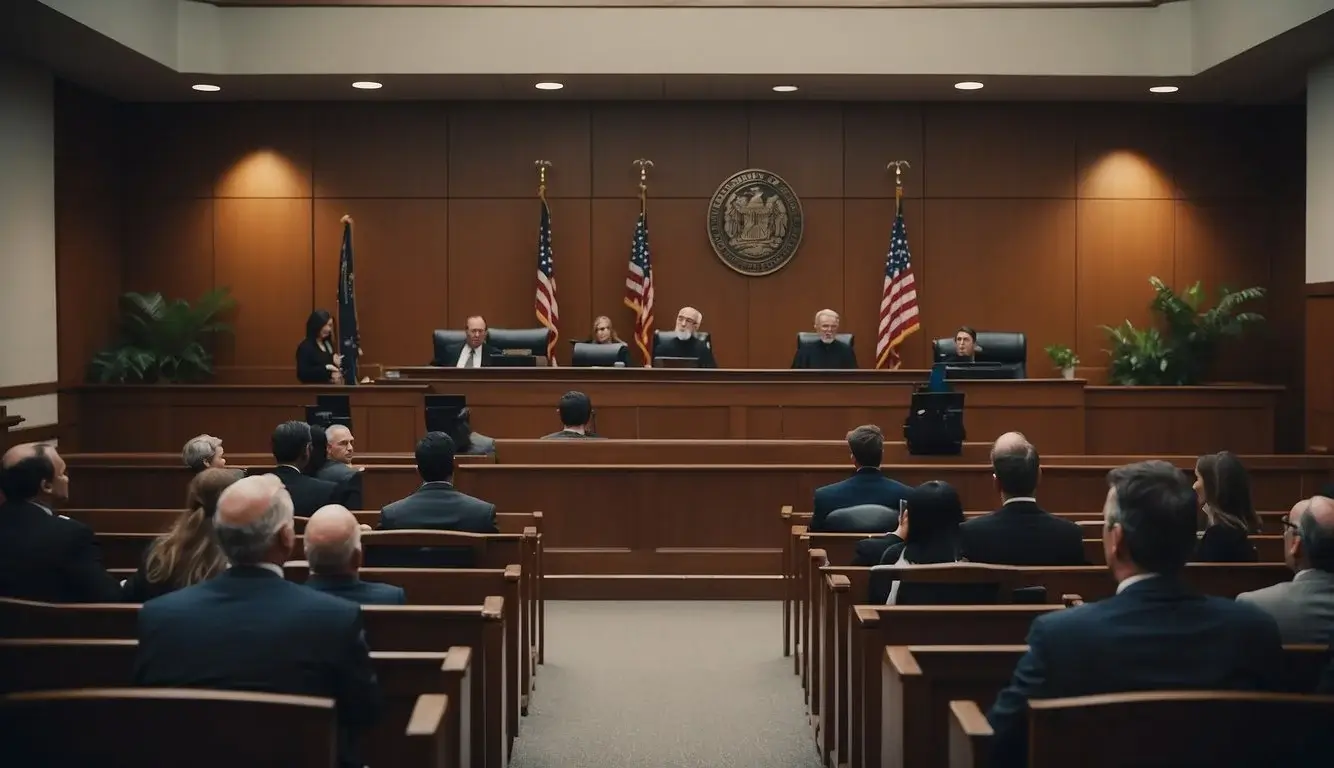After thorough investigation into legal forums and consulting with legal experts, I have compiled an in-depth guide on court etiquette essential for anyone stepping into this prestigious environment. It is anticipated that all participants and spectators in a courtroom will adhere to a set of conduct rules that honor the legal process and all individuals participating.
This exploration into courtroom etiquette covers everything from appropriate attire to the respectful behavior expected within these walls. It’s about more than just making a good impression; it’s a fundamental aspect of participating in a system designed for fair and orderly justice. From silencing electronics to addressing the court with the proper decorum, every action taken reflects your respect for the institution and the serious matters at hand.
Key Takeaways
- Upholding courtroom etiquette is vital for showing respect to the legal process.
- Knowledge of expected behaviors ensures smoother court proceedings.
- Proper demeanor in court reflects positively on me and supports justice.
Understanding the Court System
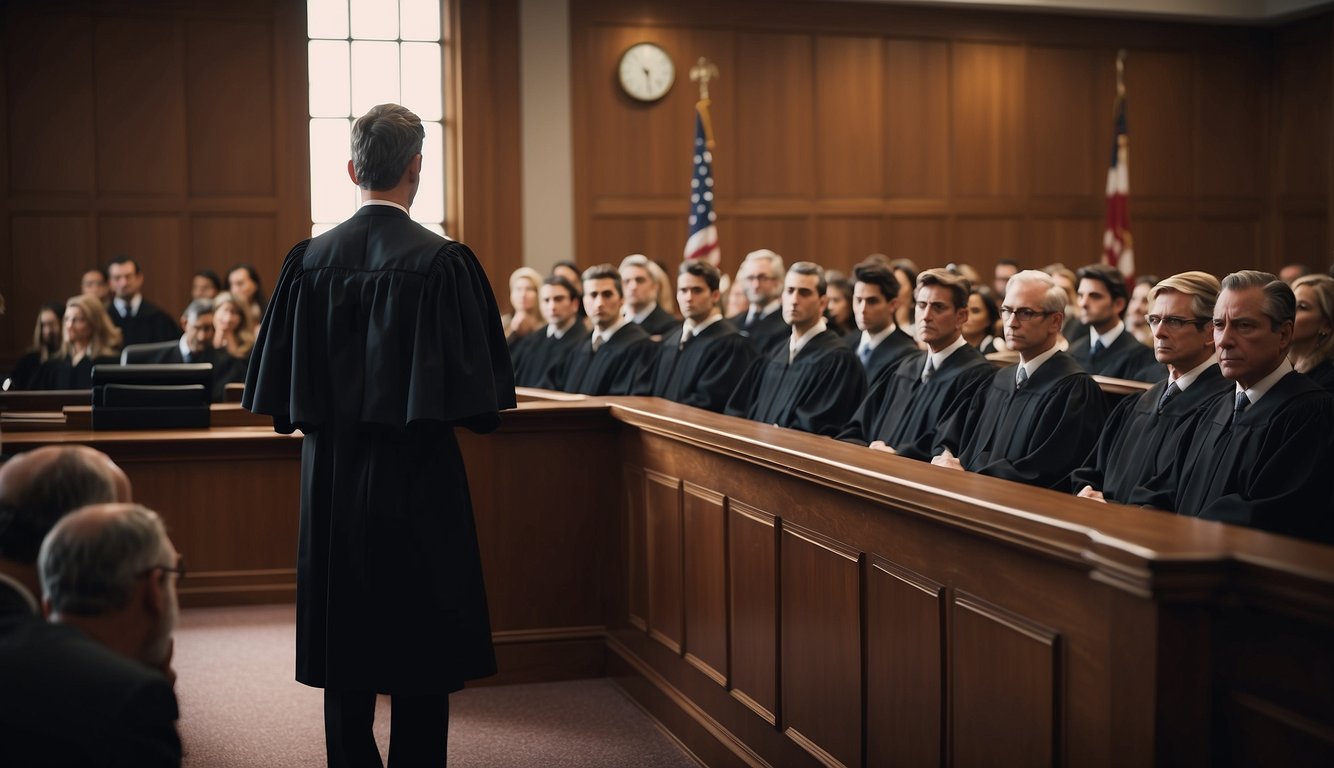
When I step into a courtroom, I’m entering a place where each person has a role, and the proceedings follow specific types of hearings. Knowing who does what and the nature of different hearings is important for me to navigate the legal system effectively.
Role of Different Court Members
Judge: I see the judge as the authority in the court, tasked with ensuring the law is followed and making decisions on the cases presented. They oversee the courtroom, rule on motions, instruct the jury, and sometimes decide the outcome of a trial if there’s no jury.
Attorney: Attorneys represent the parties involved in the case. There are different types of attorneys, like a personal injury lawyer, who specializes in cases where someone has been harmed due to someone else’s actions. They give legal advice, present evidence, and argue on behalf of their clients.
Jury: A jury is a group of citizens who are responsible for determining the facts of the case and delivering a verdict. They listen to the testimony, examine the evidence, and decide according to the judge’s instructions.
Witness: Witnesses provide testimony based on what they’ve seen, heard, or otherwise experienced concerning the case. Their testimonies can significantly influence the jury’s decision.
Court Reporter: I take note of the court reporter, positioned near the judge, who transcribes the proceedings. This transcript becomes an official record of the case.
Court Staff: The court staff manages the administrative aspects, ensuring everything runs smoothly. This includes the bailiff, who maintains order, and clerical staff, who handles the paperwork and manages case files.
Types of Court Hearings
- Preliminary Hearings: For criminal cases, these are where the judge determines if there’s enough evidence to proceed. I understand this is especially important for the accused’s legal journey.
- Trials: This is the main event, where both sides present their cases in full, calling witnesses and introducing evidence. Trials can be before a judge (bench trials) or a jury (jury trials).
- Sentencing Hearings: If the accused is found guilty, I’ll observe the sentencing hearing where the judge determines the punishment based on the law and circumstances of the offense.
- Appeal Hearings: Should a party believe there was a legal mistake, they can bring an appeal. This isn’t about re-trying the case but examining the law’s application.
- Motions: Outside of these hearings, there are numerous motions attorneys might file for various reasons – from excluding evidence to requesting the case be dismissed.
By understanding these different roles and types of hearings, I’m better equipped to follow what’s happening in a court case and can appreciate the complexities of our legal system. It’s crucial to remember that while this information serves informational purposes, one should always seek legal advice on personal or specific legal queries.
Before Attending Court
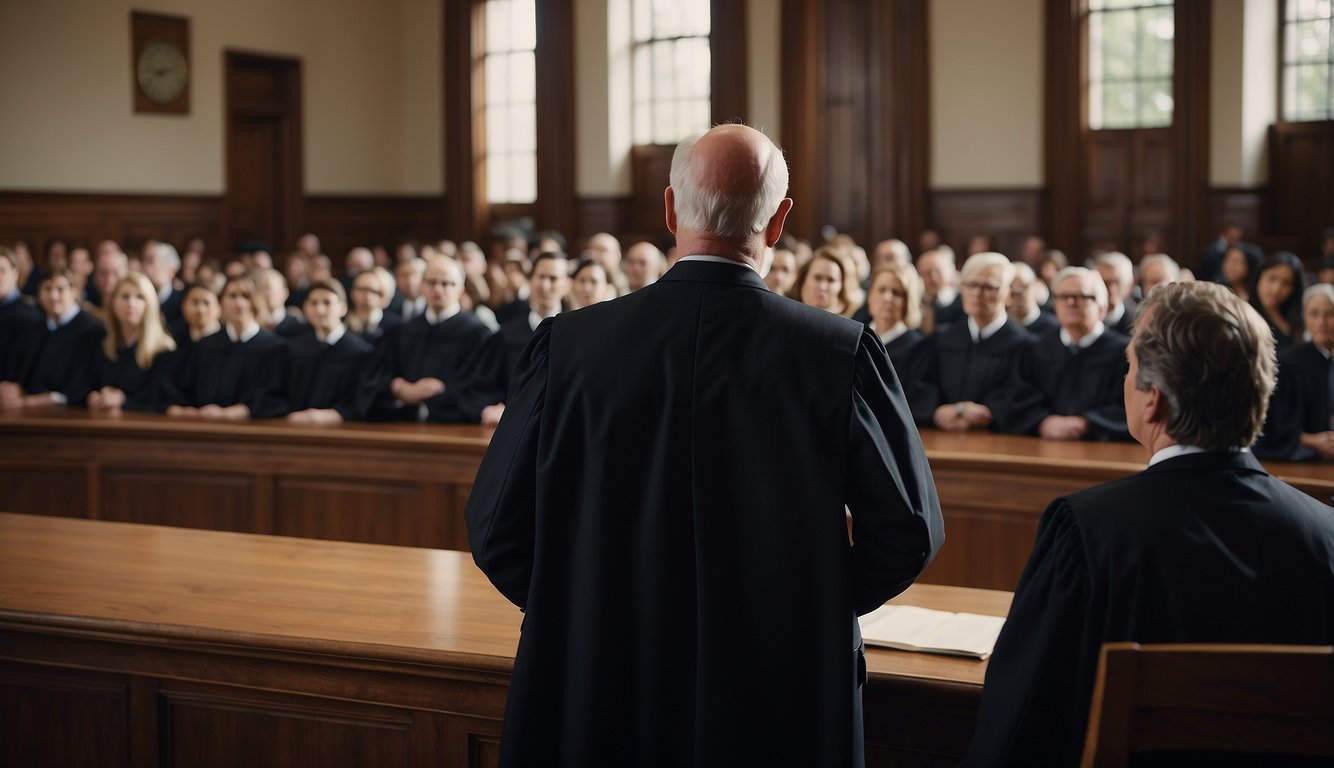
Before stepping into a courtroom, I make sure I have two key aspects covered: Scheduling and Preparation, and Dress Code and Attire. These pillars of courtroom etiquette set the stage for a respectful and orderly court experience.
Scheduling and Preparation
I always check my court date thoroughly to ensure there are no scheduling conflicts. I must mark this date clearly on my calendar and set reminders to avoid any last-minute rush or confusion. On the days leading up to the appearance, I prepare the necessary documents and organize them to be easily accessible. I familiarize myself with the court’s location to guarantee a prompt arrival, aiming to be there at least 30 minutes early to account for any unforeseen delays.
Dress Code and Attire
Understanding the dress code for court is crucial. Courts often expect a level of formality, so I select appropriate attire that demonstrates respect for the institution. Here’s a quick list of do’s and don’ts for what to wear to court:
- Do’s:
- Men: Suit or dress slacks with a dress shirt and possibly a tie.
- Women: Business attire such as a conservative dress, suit, or pantsuit.
- Don’ts:
- No jeans, especially those with rips or excessive wear.
- No boots that resemble work or combat-style footwear.
- No hats inside the courtroom.
- Refrain from flashy or informal attire that distracts.
By dressing appropriately, I show the court that I’m taking proceedings seriously and that I understand and respect the court’s expectations and rules.
Courtroom Behavior
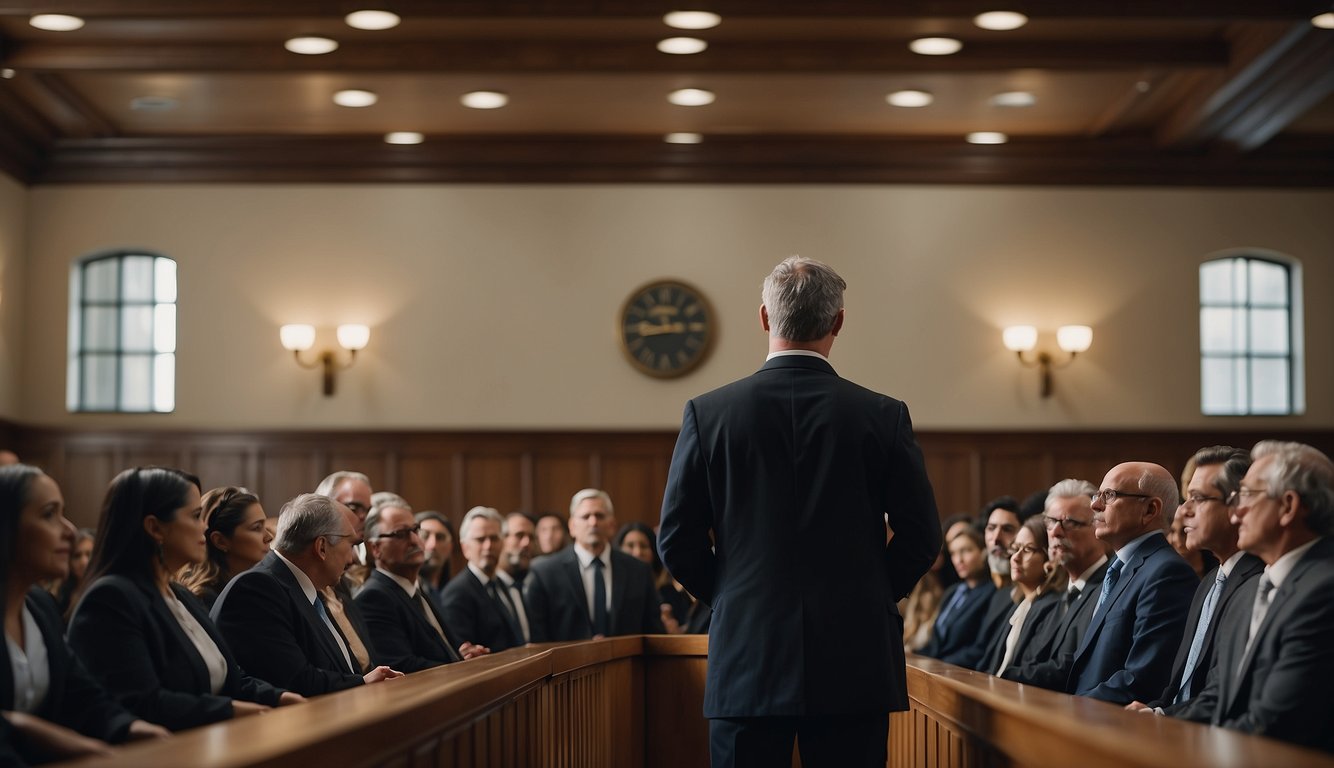
When I’m in court, I understand the importance of adhering to strict standards of conduct, which include how I address the court and interact with other participants. It’s not just about the rules; it’s about showing a deep respect for the legal process.
Addressing the Judge and Court Staff
Your Honor is the term I always use when speaking directly to the judge—it’s a clear sign of respect and acknowledgment of their authority. I ensure that my tone remains polite and that I maintain appropriate eye contact when addressing the judge or any court staff. This respect also extends to my body language; I stand up straight and avoid any gestures that could be interpreted as casual or disrespectful.
- Always stand when the judge enters or addresses me.
- Speak clearly and formally, never interrupting the judge or court staff.
Behavior with Other Court Participants
Interacting with fellow court participants, whether they’re witnesses or opposing counsel, requires a level of civility and respect. It’s critical to remember that the court is a place of law and order, and my conduct must always reflect that.
- Emotions: I keep them in check, regardless of the situation.
- Quiet Presence: Do not chew gum, eat, drink, or smoke; these are distractions and show a lack of respect.
- Electronic devices: These are set to silent or turned off to avoid disruptions.
- Remain calm and collected: This helps to maintain decorum and demonstrates my respect for the court proceedings.
Courtroom Procedures
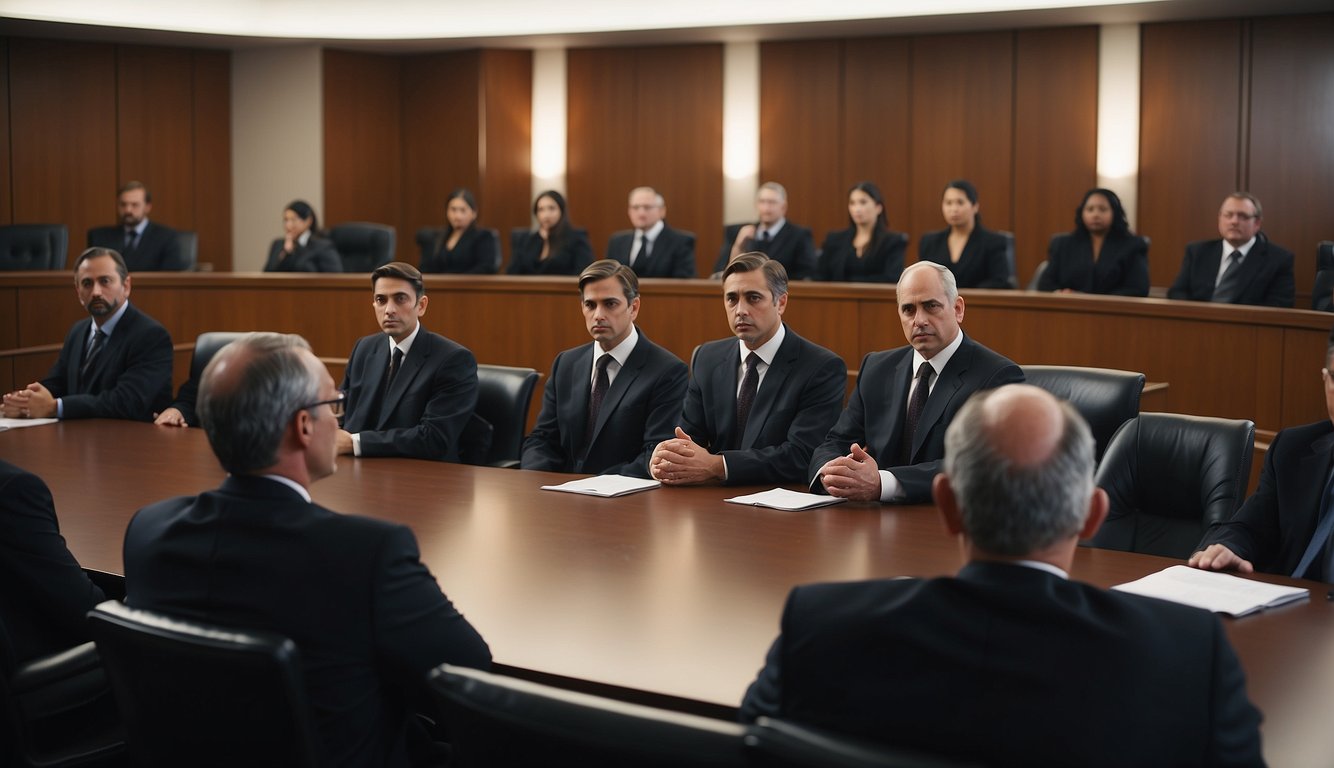
In my experience with courtroom procedures, I’ve learned that knowing when to speak and understanding the process of court motions and appeals are crucial. These aspects ensure that the proceedings are orderly and respectful of the court’s time and authority.
When and How to Speak
During court proceedings, I always wait for my turn to speak. Addressing the judge with the appropriate title such as “Your Honor” is a sign of respect. When permitted to stand and speak, I express myself clearly and audibly, avoiding interruptions or speaking out of turn. Keeping my cellphone silent is a must, as any sound can be deemed disruptive.
- Stand: Only when granted permission or when called upon
- Interruptions: Avoid at all costs, only speak when it’s my turn
- Addressing the judge: Always use “Your Honor” and speak with deference
- Cellphone: On silent mode or turned off to prevent interruptions
Court Motions and Appeals
I’m mindful that motions are formal requests made to the judge, and I ensure they are both timely and relevant. Appeals, on the other hand, are processes that I’ve seen require a strict adherence to protocol and deadlines. If ever I have to be a witness, I maintain composure and stick to the facts, often referring to my notes to ensure accuracy.
- Motions: Formal requests following specific courtroom protocol
- Appeal: A structured process that follows a conviction or court decision
- Witnesses: Speak only when called and stick to what I’ve observed or know to be true
- Notes: Using them to reinforce my testimony when permitted
Understanding these procedures has helped me navigate the courtroom effectively and with the appropriate decorum.
Respecting Courtroom Regulations
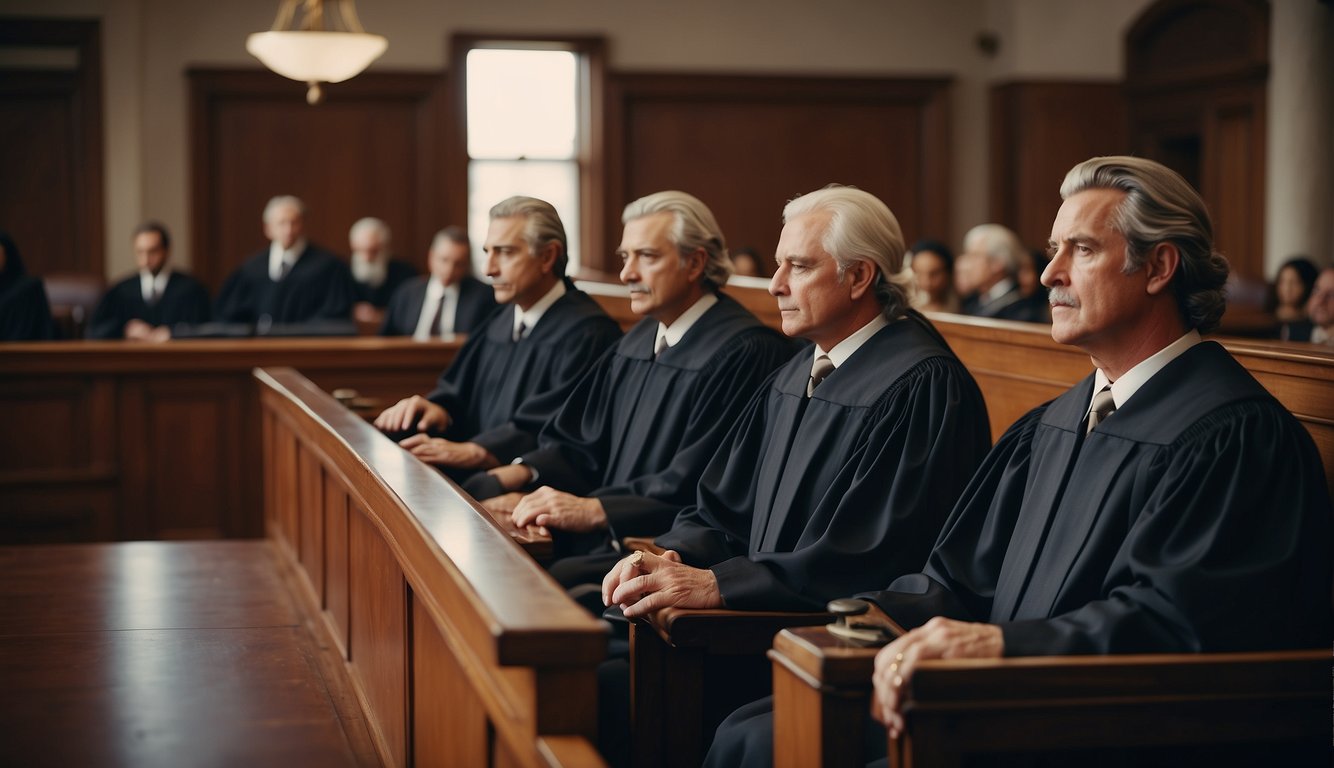
When I step into a courtroom, understanding and adhering to the proper courtroom etiquette is crucial in demonstrating respect for the legal process. I always ensure that I’m dressed appropriately, as it shows dignity and reflects my understanding of the formal environment. Clothing should be conservative and professional to maintain the decorum demanded by the court.
I need to remember to stay calm and composed, even under pressure. Raising my voice or showing anger can be seen as disruptive and may be considered contempt, which has serious consequences. I also know that weapons of any kind are strictly prohibited in a courthouse, for everyone’s safety.
Here are some key points to remember:
- Dress Code: Conservative, professional attire.
- Behavior: Remain calm and address the court respectfully.
- Prohibited Items: No weapons or other banned items.
Additionally, I make sure to plan ahead for parking and transportation. Nothing shows disregard for the court’s time like being late. I ensure that I arrive early, giving myself ample time to find parking and go through any required security screenings. Courts often have their own parking regulations, and I must be aware of these.
Following these regulations is not just about avoiding trouble; it streamlines the process and shows the court that I respect the law and its representatives.
Dealing with Special Circumstances
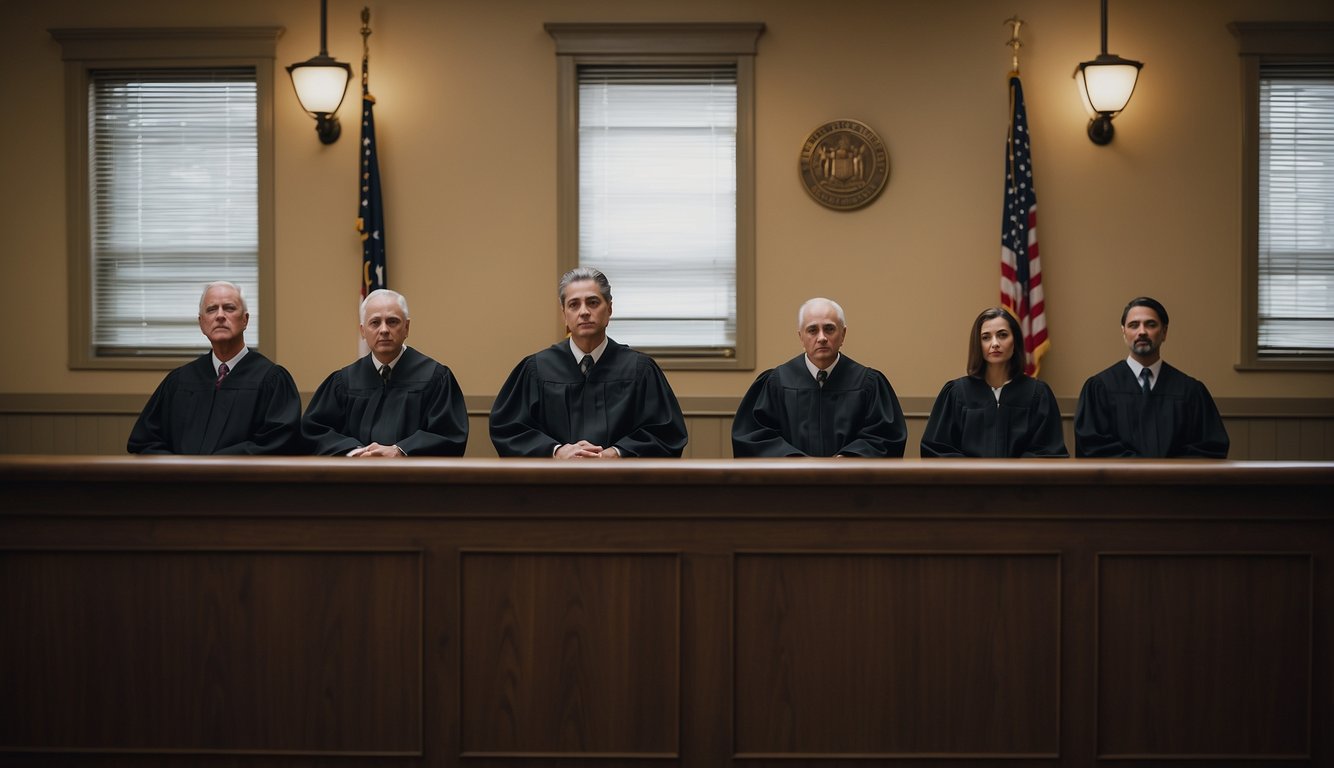
In the realm of courtroom decorum, we often face scenarios that aren’t always cut and dried. From juggling the responsibilities of parenthood to grappling with the nuances of regional legal practices, unique situations require a little extra foresight and planning to maintain civility and respect within the courtroom setting.
Attending with Children
When it comes to bringing my children to a court appearance, preparation is key. I always remember that the courtroom is a place of serious business and not all moments are suitable for kids. Here’s my approach:
- Before the Visit: I explain to my children the importance of being quiet and respectful. For younger ones, I pack a silent activity like a coloring book.
- During the Hearing: I sit near the exit just in case we need to step out quickly if they become restless or disruptive.
Courtroom Etiquette in Different States
As I travel from state to state, I’ve learned that what’s acceptable courtroom behavior can vary. For example, in Ohio, there are specific rules about addressing the court and presenting myself.
- Attire: It’s crucial to dress conservatively. I ensure I wear suitable clothing—no jeans or casual wear.
- Addressing the Court: Although each state may have its protocols, I always follow the standard of being polite and using ‘Your Honor’ when speaking to the judge.
FAQ – Courtroom Etiquette
How should I dress for a court appearance?
Dress conservatively and professionally to show respect for the court. Men might consider wearing a suit or dress pants with a collared shirt, while women could wear a dress, skirt, or pants with a conservative top. Avoid casual wear like shorts, flip-flops, or t-shirts with offensive graphics or slogans.
What should I do upon entering the courtroom?
Upon entering, it’s customary to briefly acknowledge the court with a nod or a bow towards the judge’s bench. Make sure to turn off or silence all electronic devices to avoid disruptions.
Is it acceptable to bring food or drinks into the courtroom?
Eating or drinking in the courtroom is generally not allowed. It’s best to finish any snacks or beverages before entering to maintain the formality and cleanliness of the court environment.
If you enjoyed reading about Courtroom Etiquette, check out our other articles:
- Bowling Etiquette 2024: Tips for Polite Play on the Lanes
- Surf Etiquette 2024: Key Rules for Sharing the Waves
- Tennis Etiquette 2024: Key Rules and Polite Play for Beginners
- Laundromat Etiquette 2024: Tips for a Harmonious Wash Day
- Theatre Etiquette 2024: Tips for a Respectful Audience Experience
Feel free to also check out our other Articles from the category “Etiquette & Manners“ and don’t forget to follow us on Pinterest.

